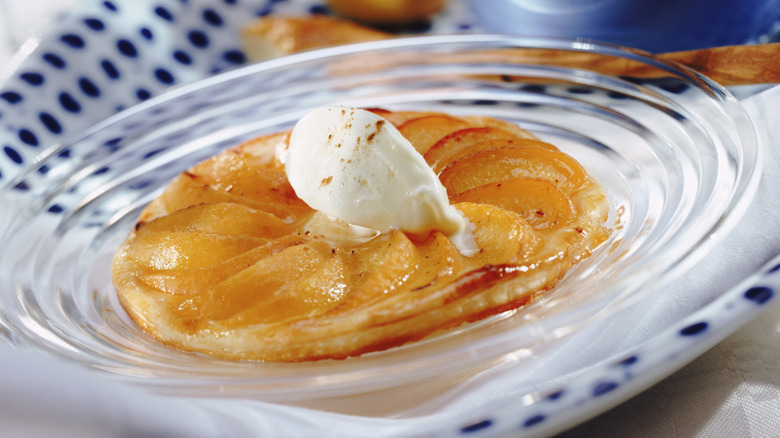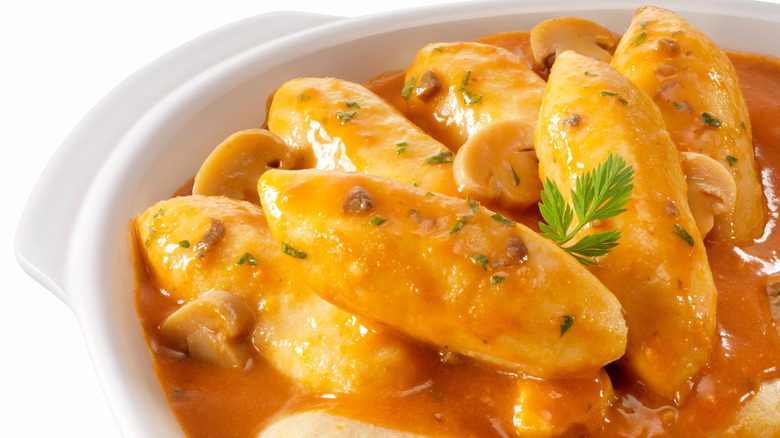You're One Utensil Away From Perfect French Quenelle Pastry Decorations
If you've eaten at a restaurant that's big on plating as opposed to merely dishing up, there's a good chance you've seen a football-shaped scoop of something used to decorate your food. This is the quenelle, which is kind of like 3D latte art, only it's always an oval instead of looking like a leaf or a heart. Yami Mercado, a pastry chef with the Chicago Athletic Association restaurant Cindy's, describes quenelles as being "all about the presentation, turning a simple element into something refined." If you want to start fancying up your home-cooked food with these decorations, it may take practice, but you won't need any specialized equipment.
According to Mercado, "You don't need fancy tools — just a regular spoon and a little patience." (If you want to feel like a real pro, though, you could always use a Kunz spoon.) She recommends that you first warm the spoon in hot water, then scoop your chocolate mousse, ganache, or what have you in a smooth, gliding motion that she compares to carving. If the spoon sticks, you'll need to wipe it down and warm it up again. "Clean edges and fluid motion are key," Mercado told us, adding, "It takes practice, but once you get the hang of it, it becomes really satisfying."
Quenelles aren't strictly for pastries
The spoon-scooped quenelles described above are all about looking pretty, no matter what they're made of. As a pastry chef, Yami Mercado is most familiar with their use in desserts, describing them as "usually made with ice cream, mousse, or whipped cream, such as chantilly." Savory quenelles can also be a thing, though, made from caviar, pate, or mashed potatoes. In fact, you could even do guacamole quenelles if you want to make the world's fanciest nachos.
Originally, however, quenelles weren't a decorative element, but a French dish called quenelles de brochet. Despite the elegant name and shape, these quenelles are basically fish dumplings, somewhat similar to gefilte fish. The quenelle's ancestor may have been a type of ancient Roman fish cake, although the name only dates back to the 1700s, and the classic Lyonnaise recipe seems to have evolved in the early 19th century. Etymologically, the word "quenelle" is thought to be related to the German "knödel," a term meaning "noodle" or "dumpling."
Quenelles were typically made with pike until the mid-20th century, at which time WWII food rationing led to people eating a plain, fish-free version. At some subsequent point, the term eventually evolved to encompass non-dumplings. While there doesn't seem to be a record of when and how this happened, it seems as though modern-day quenelles (the decorative type) had become trendy by the 1990s.

